Abstract.
Abstract. The false news that is published in Ecuadorian digital media occupies a leading role,
generating concern, both in professionals and in the public. Therefore, the purpose of this study is
to reflect on the motivation, components and lines of distribution; of the misinformation that
audiences collect and the benefit that certain agendas of the political, economic and social sphere
receive. On the other hand, it shows approaches that explain certain informative factors, some of
greater relevance than others. 196 individuals participate in this investigative process, with
significant criteria but limited capacity to identify and differentiate what is true from what is
false. The results show the feasibility of marking itineraries that seal the way in the correct
dissemination of highly accepted content in online communication systems, preferably in social
networks. It comes to the conclusion that, although journalism can be carried out in a responsible
and professional way, what is done is limited compared to the verification and contrast of the
facts. It is necessary to apply the norms and constitutive laws that allow validating the right of
individuals to receive reliable information, in accordance with the principle of freedom of
expression, without forgetting the deontological elements that prevail in communication, in order
from this context to assent the informative validity.
Keywords: Fake News; Digital media; Disinformation, digital journalist.
FAKE NEWS: DESCRIPTION AND IMPACT OF DISINFORMATION IN ECUADORIAN DIGITAL
MEDIA
Resumen.
Las noticias falsas que se publican en medios de comunicación digitales ecuatorianos ocupan un papel
protagónico, al generar preocupación, tanto en profesionales como en la ciudadanía. Por lo tanto, el
propósito de este estudio es reflexionar respecto de la motivación, componentes y líneas de
distribución; de la desinformación que recogen las audiencias y el beneficio que reciben ciertas
agendas del ámbito político, económico y social. Por otro lado, se muestra planteamientos que
explican a ciertos factores informativos, unos de mayor relevancia que otros. En este proceso
investigativo participan 196 individuos, con criterios significativos pero limitada capacidad de
identificar y diferenciar lo verdadero de lo falso. Los resultados evidencian la factibilidad para
marcar itinerarios que sellen el camino en la divulgación correcta de contenidos de alta aceptación
en los sistemas de comunicación online, con preferencia en redes sociales. Se arriba a la conclusión
de que, si bien el periodismo puede ser ejecutado de forma responsable y profesional, lo que se hace
es limitado frente a la verificación y contrastación de los hechos. Es necesaria la aplicación de
las normas y leyes constitutivas que permitan validar el derecho de los individuos a recibir
información confiable, en concordancia al principio de la libertad de expresión, sin olvidar los
elementos deontológicos que priman en la comunicación, para desde este contexto asentir la validez
informativa
Palabras clave: Fake News; Medios digitales; Desinformación, periodista digital.
Introduction
Digital media have come to change everything that so far involves consuming information and
journalism.
Society prefers to update its contents through social platforms such as: Facebook, because there are
distributed data that allow to consolidate trends, as they serve as distraction systems to avoid
events
of reality, since the publication of news lacking veracity is not something new.
The main objective of this article will be to observe how the existing digital media in southern
Ecuador
have managed this dichotomy related to the veracity of falsehood. Internet access has intensified
this
issue induced, to a large extent, by the imperceptible diffusion in non-conventional media among
users
who spread information through different channels. This increase is not only a source of concern and
interest for professionals, but also for audiences who observe how news stories are no longer the
exclusive domain of a few, but involve society as a whole, so that in broader terms the aim is to
reduce
disinformation and the impact of fake news,
In this context, a documentary analysis of scientific publications related to the subject is made,
to
determine what actions have been incorporated by digital media and communication professionals to
curb
the flood of disinformation in digital environments. It should be considered that the Internet is
not a
demarcation world between traditional and digital journalism, but constitutes the entrance to a
cosmos
of new opportunities to practice the profession (Palomo, 2004).
Nowadays there is a great number of media and supports to know the "last minute" of a fact, always
exposed to a constant excess of information where false contents circulate with total freedom,
adding to
this the immediacy, which journalists must also face.
The concepts that allowed to deepen in this study are related to political communication,
journalistic
world and education, being the latter the one that should be given more attention, whose procedure
lies
in selecting information content that allows to differentiate the true from the false, to show
reflective positions against what is presented as apparent objective information.
Ecuador recently experienced an electoral period to renew state dignities: president and vice
president
of the Republic; in addition to national and provincial assembly members, where the role played by
digital media was notirio, where the real and the apparent were mixed in favor of political
interests,
mobilizing the emotions of the electorate, with the sole intention of influencing their behavior,
for
which the digital media, such as Primer Reporte, Lo del Momento Loja, Masharos News and El Oro
Digital,
showed their sympathy for one candidate or another.
From the methodological perspective and to understand the problem in greater depth, the opinions of
those
who work in digital media and citizens followers of these platforms are compared, in addition to the
statistical analysis of published information, in order to determine their views on the importance
and
influence of fake news within the communication landscape and the usefulness of ethical resources in
the
construction of objective journalistic content. This will allow delving into research processes that
compare professional cultures and audience opinions.
Fake News
To refer to the phenomenon under investigation, the Anglo-Saxon term of fake news will be used, which
describes journalistic contents that lack truth, which are published through different media:
portals,
print, radio, which make them appear as true events, to manipulate the public mind.
From the contextualization perspective, disinformation has always existed, from the moment awareness
was
gained, regarding the media and the community, specifying what Gaber, (2017) says "it would be
worrying,
in the sense that disinformation flows with speed and amplitude through digital platforms such as
Google
or Facebook" (p. 9).
Allcott, H., & Gentzkow, M., (2017, p.p. 211-36) in relation to fake news and social media, together
with
(Silverman, C., 2016) narrate for example that the most popular story qualified as fake news was
widely
more shared on Facebook, than truthful events with higher acceptance.
However, this should be understood as a turnaround in journalism, as they pose challenges to the
extent
of how difficult it is to differentiate the false from the truthful, that generation of
non-objective
information are a constant, in digital media.
The above is comparable with the expressions of (Rochlin, 2017) proposes to relate its position to an
information war, being far from assuming the responsibility to fight against false events and
rather,
claim the role of information professionals as generals in this battle: to train critical users.
Post-truth
The purpose of fake news in the 2016 U.S. election campaign was to attract visits to their web
portals
and their frequent dissemination on social networks. Just like serious and quality news, pages
dedicated
to the fabrication of false content offered readers greater possibilities to share falsehoods on
different platforms. Today, the Internet assists journalistic information in its dissemination, on
digital platforms and social networks, long before being promoted in other spaces.
The progressive growth of the digitalization of the information market, motivates the use of an
infinite
number of resources to make certain events appear as real, by thinking, for example, that a website
can
be similar to that of a reputable media where they misrepresent or even propagate content networks,
which can rely on themselves to generate credibility.
In 2016, opinions regarding Trump's victory in the U.S., of Brexit in Great Britain and the "No" in
the
referendum for peace in Colombia, the revenge of the herd in Australia, the crucified child in
Ukraine,
the girl in Kuwait and the invasion of Iraq, referred to very concentrated campaigns, which led to
determine that the actions of the media and digital platforms, influenced the outcome, something
unexpected, without doubt became important events that diminished the quality and rigor of the
contents
(Ramirez, 2007).
"Spreading disinformation is probably the greatest harm the media can do" and highlights that "using
the
media for this instead of educating the public counts as a sin" Francisco (2016).
Falsehood of information
False events, strictly speaking, can have economic, political and other motivations, which
undoubtedly
becomes a challenge for the media, but not an alternative to the problem, the importance is not only
technical but also social, because people are the ones who share the content. And although the news
can
become less visible, the criterion of Internet users also counts. Chackabarti, (2018) argues that
"At
best, Facebook enables us to express ourselves and take action. At worst, it makes it possible for
people to spread misinformation and eat away at democracy."
It is also added that the pages that share fake news pursue objectives such as: gaining followers,
selling advertising, discrediting something, someone, generating distraction from other issues,
stealing
personal information or getting money in exchange, for example, inviting to enter credit or debit
cards
for some charitable cause or fictitious purchase, so the urgency of knowing how to identify hoaxes
and
fake news by their own characteristics is born.
Characters of high world representation such as former President Trump (2016-2020) made credible
certain
claims such as that Barack Obama was born in Kenya, a rumor that also the former president had held
since 2011, or that the former president founded ISIS (Kopan, 2016). These are information resources
that have a truthful appearance.
Analyzing the content of the Secure Ethical Network published in 2017, Facebook was the stage where
the
battle of 'engagement' was fought during the last presidential elections in the United States. An
analysis carried out with the Buzzsumo tool showed that as the voting date approached, fake news was
more shared than real news. For his part, Colombian Hernán Darío Restrepo (2017), clarifies that:
the problem of this epidemic has begun to be attacked on two fronts: business and distribution.
Statements made by Paul Horner, a prolific creator of fake news on Facebook, to The Washington Post
made
it clear that publishing fake news on a web page to attract millions of clicks is extremely
profitable.
According to his confession, he had managed to earn more than $5,000 a month thanks to the
advertising
served on the website where he was hosting these far-fetched stories.
Advertising elements are decisive in the publication of advertisements that are usually accompanied
by
contents that, being headed by yellow headlines, capture the attention, and concentrate hundreds of
people constituted as audiences.
Ecuadorian Context
Worldwide, the media, such as the written press, are struggling to find, create and locate new
multimedia
dimensions to integrate into their platforms. It is not known in which world it is entering, as
Serrano
(2013) points out:
We do not know what exactly the new technologies are or what they are engendering again. We don't
know
if the Internet is a technique like writing, a tool like the printing press, a new continent like
America or an organ like our right kidney. It is probably all of these at the same time. What we can
say
is that it introduces us - is already introducing us - in a post-literate condition; in a condition
in
which what is decisive, as a new frame of perception, is no longer the public letter nor, as it is
often
believed, the hidden "digit" but "the screen" turned on.
In Ecuador, the media have been part of the Internet since 1995. Newspapers, Hoy delivered the first
news
bulletin through ClariNet (Ayala and Cruz, 2017), with a global reach. El Comercio in 1999 had a
digital
edition and six years later incorporated new multimedia formats to its platform. El Universo entered
the
web in 1997 until 2008, including social networks as a digital weapon to obtain greater reach on the
web
(Rivera, 2014). La Hora appears in 1998 and improves web design, forcing other media to update.
Diario
Expreso and El Extra in 2007 join the digital platform.
Genres do not present themselves in a static way, but undergo constant evolutions and, for that
reason,
a theory on genres cannot be considered as a series of fixed laws, but as a system for organizing a
context permanently open to debates, discussions, and diverse critical interpretations, (Obitel,
2017).
Paradigm shifts are now an absolute reality in terms of journalism, there are now media outlets that
choose to have journalists all over the world and provide information on a large scale, although it
is
difficult for people to stop trusting internationally recognized media outlets, based on their high
credibility indexes.
Ecuador has in place, many sites that function as media and are managed by recognized journalists,
despite being independent spaces, audiences trust those who write there, despite this it is complex
to
point out the triumph of trust, because disinformation and false news circulate instantly.
The digital media, with their appearance have motivated new opportunities for communicators, many
watch
over the deontological application, working independently.
The journalist's role
Communication professionals have at their disposal reliable sources of information, to which they can
resort to meet the needs of their audiences. A reliable source, a reference source, follows controls
and
validations that guarantee the quality of information. The presence of the Internet, the blog, the
web,
the monopoly of informing is broken, and it is no longer only the editors of newspapers, magazines,
books or the media who have the capacity to issue messages. (Casero-Ripollés, 2015) Censorship
should
not be forgotten as an impediment to professional practice, but legal, moral, and religious
obstacles
were called "online civic reasoning". (Wineburg, 2016)
Many have forgotten that the journalist is the person who lives, applies, and shares the principles
of
journalism, which, as Kovach and Rosenstiel (2003) agreed that the first obligation the truth, must
loyalty first and foremost to the citizenry, maintain independence from their sources, exercise
control
independent of power and in their work apply the method of verification. The rest is simply not
journalism.
Every journalist must always tell the truth, has the obligation to inform the public, his job is to
verify what is published, must maintain independence from power, must act as a public forum, publish
relevant content, and show responsibility with his conscience, that is a high professional
responsibility.
Each professional should apply the principles and creed of journalism as an effective code (Williams,
1908), which must be applicable to journalism today and coincide with those proposed by Kovach and
Rosentiel. Understood in such a way, the journalist contributes to satisfy citizens' information
requirements, although the truth is the maxim that every journalist should set as a purpose.
The benefit of low-cost communication has been reduced to describing the activity of audiences on
Twitter, Facebook, Instagram, or Snapchat. However, today's journalism is affected by an
over-stimulated
society, constantly open to new experiences.
Refutting Fake News
El fenómeno de la fiabilidad viene dado cuando se carecen de referencias, tal como sucede con las
noticias de actualidad. En varias ocasiones, no hay una forma de conocer la verdad de manera
inmediata,
a menos que se someta a cuarentena la información, hasta encontrar las evidencias que prueban o
demuestran los hechos mencionados por una noticia.
The phenomenon of reliability is given when there is a lack of references, as is the case with
current
news. On several occasions, there is no way to know the truth immediately, unless the information is
quarantined, until evidence is found to prove or demonstrate the facts mentioned by a news item.
Curation of information is opposed to the primary impulses of users in social networks and of
society,
which claims immediacy as a higher value than truth and prudence. However, even considering a piece
of
news as legitimate or transmitting the truth, it may happen that the official source that transmits
it
has been contaminated or, deliberately, slightly changes a message or facts that have occurred. This
case of false news would be difficult to identify, since the source and transmitter of the
information
is the only one who knows the truth. How then is the lie unmasked? In all probability, it is
accepted
and is a false truth, until a mistake is made, or another source of equal rank is found, which
demonstrates with evidence, the truth. (Desantes, 1976)
The technique of "data representation" consists in the creation of pockets or groups of significant
words
by their frequency in the false news. Thus, if the identified words appear in a news item with a
certain
frequency of occurrence, this news item increases its probability of being false. This theory makes
sense, as there are words commonly used in superficial discourses, which can reveal a hoax
(Markowitz
and Hancock, 2014).
The "rhetorical structure analysis", involves the identification of linguistic schemas and
assumptions
that are prevalent in fake news. To measure the likelihood of fake news, similarity calculation is
performed, through the vector space model (Rubin, & Lukoianova, 2015). However, this method has not
yet
been tested and its effectiveness is unknown.
The application of the "network behavior" technique allows detecting trolls, and even profiles that
misinform. These patterns can be compared with those of the rest of users, obtaining a truthful
result,
so explain Tacchini et al (2017). Of course specifying in science news that are false. This is an
approach where the methods to detect this type of news, depends on a knowledge base with false and
truthful news to be able to segregate or archive the information more effectively.
In this sense, Wang's (2017) work stands out with the LIAR dataset, which is specifically designed
for
the political context of several countries, subdividing more than 10,000 fake news, collected over
10
years, into different subcategories of the information, such as elections, television, budgets,
taxes or
education. Despite this classification of news, there are nuances, for example, information
considered
as "rumors", "conspiracy theories" and "disinformation". This is the theory held by Shu,
In the same current is the study of Horne (2017), delves into the qualitative study of the words used
in
fake news and their frequencies. They establish differentiated features, in analytical, insightful,
causal, discrepancy, discrepancy, tentative, certainty, differentiation, affiliation, power, reward,
risk, personal interest, emotional tone, angry, sad, positive feeling, negative feeling, verb,
pronoun,
article, noun, adjective, adverb, term of comparison, exclamation, negation, slang word,
interrogative
term, punctuation, compound Word.
New journalistic paradigm
Dentro de las rutinas periodísticas está ocurriendo un cambio, no a la esencia misma del periodismo.
Periodismo es periodismo, en cualquier medio, en cualquier plataforma y en cualquier parte del
mundo.
Por lo tanto, sigue en la perspectiva de: recabar, seleccionar, jerarquizar, construir la noticia y
difundirla, con distintas modalidades discursivas llamadas géneros periodísticos, estos se
desarrollan a
partir de la noticia, solo la nota informativa se agota en la noticia. Esto permanece hasta ahora.
A change is occurring within journalistic routines, not to the very essence of journalism. Journalism
is
journalism, in any medium, on any platform and anywhere in the world. Therefore, it is still in the
perspective of: collecting, selecting, hierarchizing, constructing the news and disseminating it,
with
different discursive modalities called journalistic genres, these are developed from the news, only
the
informative note is exhausted in the news. This remains until now.
In this sense, we must consider that the media have changed, especially with the appearance of the
Internet, it has been like turning over a new leaf on journalism; therefore, this rethinking does
not
refer to what journalism is, but now how it is done. How this function is executed. It is a new
semiotic
discourse because it is not only the word; it is the image, the audio, the movement, the color and
its
structure, particularly.
For Mexican professor Susana González, 21st century journalism is facing new challenges as a result
of
technological advances and, especially, the emergence of the Internet and social networks.
It is no longer required only an excellent written writing to be read or spoken; but it includes
drawing,
symbology with which I can convey a message; many capabilities; skills now assumed in transit by a
single person who writes for paper, digital and audio support. However, this will increasingly have
to
diversify, not only specialize, because it is impossible that a single individual can do everything.
In this context and according to what González Reyna points out, it is necessary for the journalist
to
become a specialist in the handling of language, according to the foundation of the message. Knowing
how
to build that message, what languages to use, in addition to words, images and sound. It also
requires a
series of skills both for the dissemination and the search for information, which has been minimized
in
everyday news journalism.
Method
The disinformation that circulates through certain digital media is a worrying problem in the
direction
of public opinion in the world. The analysis is developed within the Ecuadorian territorial margin,
also
supported by previously developed studies, the choice is framed within the quantitative and
qualitative
method. The main objective is the establishment of guidelines that contribute to combat
disinformation
in digital media, identify which ones generate it, study the information content of other media,
know
what levels of disinformation caused by digital media, using the analysis of the Communication Law
and
various journalistic publications.
The information was collected from the testing of surveys to a group of followers of digital media in
southern Ecuador to check if the questions are understandable and if the answer options cover all
possible alternatives. This methodological approach allows to collect the speeches, criteria,
opinions,
suggestions, and interpretations of individuals in an age range of 18 to 65 years, which allowed to
verify the levels of misinformation in the audiences. Previous studies also contributed to the
structure
and depth of this work. The criteria received from digital media managers, through interviews,
generate
the contrast of positions regarding the dissemination, contrasting and verification of content;
accuracy
of journalistic sources and know what kind of instruments or filters are used to control falsehoods.
Content Analysis
Through its application, objective information is collected, delving into the descriptive forms and
the
relationship with other elements such as: psychological, sociological and history, units that
contribute
to the selection and categorization, according to their importance, reasoning obtained with the
field
work, thus synthesizing and analyzing the veracity of the contents and the indexes of misinformation
that is provoked in the audiences.
Deduction
The use of this reasoning which, due to its transcendence, motivates the search for truth,
contributed to
the analysis of general premises to derive a particular issue through the approach of a series of
variables, linked to the logic of knowing how fake news has generated disinformation when published
in
Ecuadorian digital media, particularly in the southern region, having thus analyzed and systematized
the
contents published in these digital platforms.
Induction
The induction helped to analyze the relationship between the individual phenomena, that is, to know
if
the fake news published in digital media in the southern region have influence in the Ecuadorian
national context, where misleading content is also disseminated, with the sole ingredient of
persuading,
misinforming and confusing audiences.
Quantitative
The quantitative perspective made it possible to assemble, collect and compare the results obtained
by
classifying each of the criteria expressed by the participants in the study. The reasons and
motivations
about the disinformation caused by fake news were verified through the data ordering process
according
to the values and percentages found after the direct analysis. Once the surveys were conducted, the
numerical sample was structured in order to establish the difference of degree given by the
researched
with each answer, for the subsequent planning or statistical survey.
Qualitative
It contributed to the selection of the events or facts published in the digital media of the southern
Ecuadorian region, from the empirical perspective, since they are non-quantitative aspects. The
criteria
or reasoning of those investigated, contributed to the description of reality, i.e. to know the ways
in
which disinformation caused by false news generates uncertainty, although many media bet on the
publication of scoops, regardless of whether they are true or false.
The comparisons and analysis of publications made by the digital media provided clarity regarding the
behavior and interaction promoted by the participants in the representative sample.
Sample
This research identifies the levels of disinformation caused by the publication of false news in
existing
digital media in the southern region of Ecuador. The representative sample of 196 units was
obtained,
once the formula for finite audiences was cleared and after having selected a universe of 20
thousand
followers between 18 and 65 years of age, to whom a questionnaire incorporating 10 questions was
applied, answered according to their level of knowledge and familiarity with the topic to be
investigated.
Instruments
They enabled the collection of sufficient information, based on abstract concepts provided by the
researched and compared, through the analysis of the contents published in the digital media, their
classification and quantification, determined the validity, reliability and objectivity of the
results
obtained.
Techniques
Survey
It consisted of 10 questions that allowed obtaining sufficient information related to fake news,
publications, verification, and contrast of content before its dissemination in digital media and
incorporation of other questions that helped to clarify the present study. The data collected were
ordered according to each answer, obtaining more clarity about the phenomenon.
Interview
Conversations were held with professionals linked to the area of communication, directors of digital
media in the southern region: Tv Digital, Primer Reporte and Lo del Momento Loja. The analysis was
planned according to the answers obtained from the 8 questions applied, through their use it was
known
why the facts are not verified and contrasted or if the publication is based on immediacy, being
feasible the design of a structured format, which facilitated the qualitative analysis and its
corresponding comparisons.
Procedure
Quantitative and qualitative information was obtained with the support of survey and interview
techniques. The empirical material was collected through the application of 10 questions; open,
closed,
and multiple choice. The measurement instrument for the collection was the questionnaire, applied to
followers of digital media in the southern region of Ecuador.
Likewise, the interview facilitated the collection of information, in order to know what is the
treatment
given to information in the digital media of the region, using 8 open, logical and sequential
questions.
These techniques made it possible to collect an orderly record of data ranging from socioeconomic
factors
to knowledge about the levels of disinformation caused by fake news, and thus verify the ability of
audiences to differentiate the contents of the media.
Results
The designations expressed in each descriptive element accumulate separately to the categories shown
in
the quantitative and qualitative derivations.
Table 1
Gender
|
Category
|
Frequency
|
Pencertage
|
|
Female
|
96 |
48.98 |
|
Male
|
100 |
51.02 |
|
|
TOTAL
|
196 |
100 |
Source: Author’s own creation
The combined results of the sample show that 51.02% are male and 48.98% are female. The evaluations
show
that their gender condition does not exclude them from reality, regardless of their socioeconomic
status.
Table 2
Age
Category
Age
|
Frequency
|
|
Male
|
Female
|
Male
|
Female
|
|
| 18-35 |
50 |
48 |
50 |
48 |
98 |
| 35-65 |
50 |
48 |
50 |
48 |
98 |
| TOTAL |
|
|
50 |
|
196 |
| |
|
|
25,51 |
24,49 |
25,51 |
24,49 |
100 |
Note: survey of followers of digital media in southern Ecuador, according to
age
The male gender occupies 25.51% with a range of 18 to 35 years of age and with similar statistics
from 35
to 65. Women have equal proportions (24.49%) in relation to the same category. These data determine
a
strictly deducible difference in correspondence to the fact that some are younger than others.
Table 3
Instruction
|
Category
|
Frequency |
Percentage |
|
| Gender |
Men |
Women |
Men |
Women |
| Elementary |
40 |
35 |
20,40 |
17,86 |
| Middle |
35 |
38 |
17,86 |
19,39 |
| High |
25 |
23 |
12,76 |
11,73 |
|
| TOTAL |
100 |
96 |
100 |
Note: educational level of digital media followers in the southern region of
Ecuador.
According to the sample, 20.40% of those consulted are men with primary education, 17.86% with
secondary
education and 12.76% with higher education. Women 17.86% have primary education, 19.39% have
secondary
education and 11.73% have tertiary education. The high ranks show that women have middle school
education and men have primary education. In university education the categories are low in both
cases.
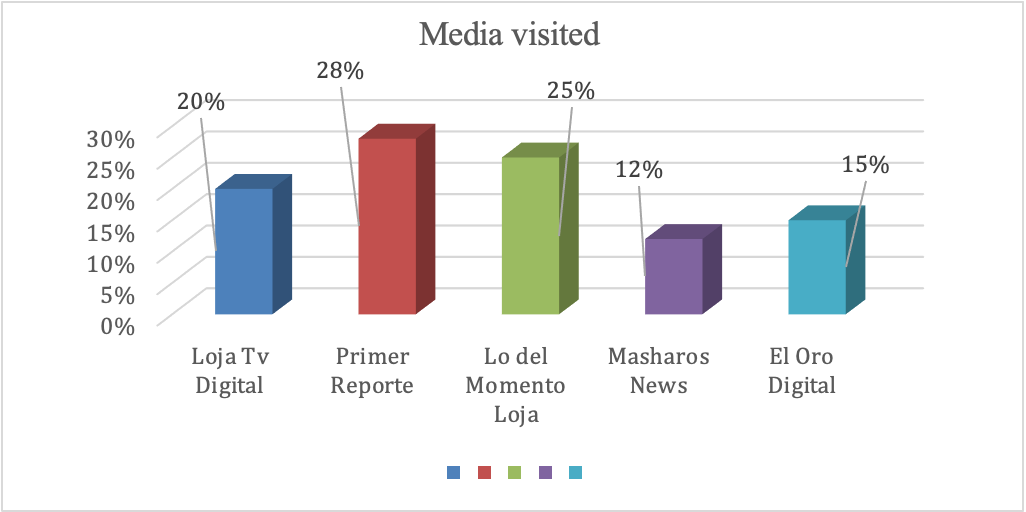
Figure 1. Digital media accounts in southern Ecuador with the largest number
of
followers.
Among the news accounts with the highest number of followers are: Primer Reporte with 28%, Lo del
Momento
Loja with 25%, Loja Tv. Digital with 20%, Masharos News, 12% and El Oro Digital, 15%. Consequently,
citizens are informed through online platforms. In preference are Primer Reporte and Lo del Momento
Loja, because it is due to the better management of the network, innovative content and the
popularity
of the media, by opening advantages for their followers, providing them with desired information,
according to their time line.
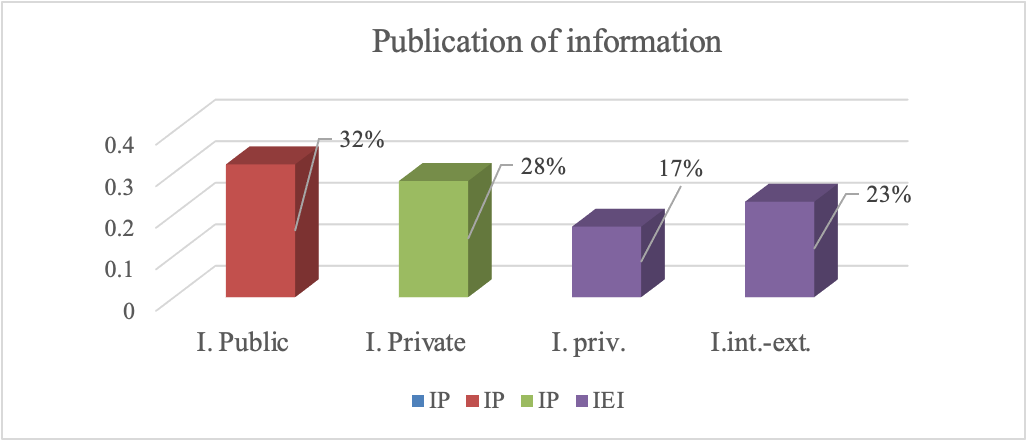
Figure 2. Information published by digital media in the southern region of
Ecuador.
Public information disseminated in digital media in southern Ecuador reaches a percentage of 32%,
compared to private (28%), privileged (17%), internal and external 23%. The volumes of journalistic
content circulating on online platforms are linked to the interest, timeliness and novelty, to its
context, with public events being the most accepted, compared to the other variables.
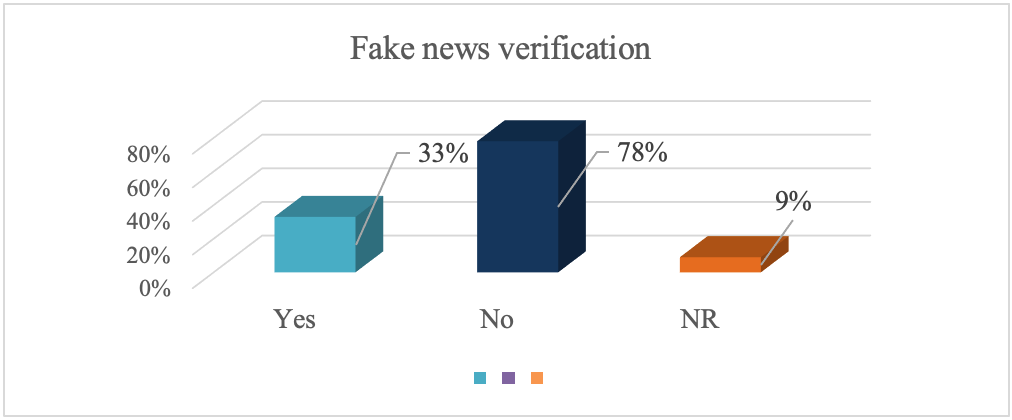
Figure 3. Identification and differentiation of untrue facts from true facts.
There is a high degree of difficulty in differentiating the true from the false (78%), compared to
23%
who diversify. Comparatively, the lack of knowledge to identify and verify information is evident
among
followers, due to the levels of lack of knowledge and the low capacity to establish contrasts.
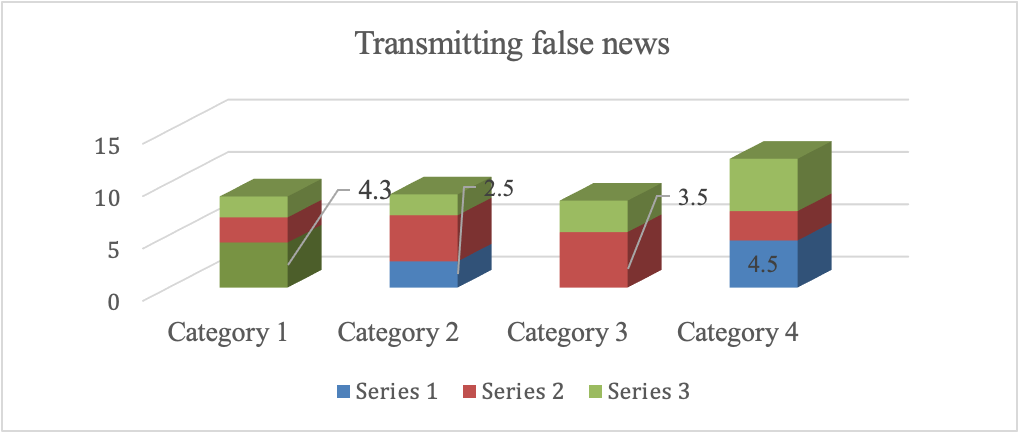
Figure 4. Unknowingly transferring fake content.
The transfer of false news stands at 76%. Seven percent have not shared information and 17% do not
remember. The preponderance in relation to this phenomenon is sufficiently striking to be taken into
account, since a high rate of content has been shared despite its low credibility, regardless of the
damage it may cause to audiences.
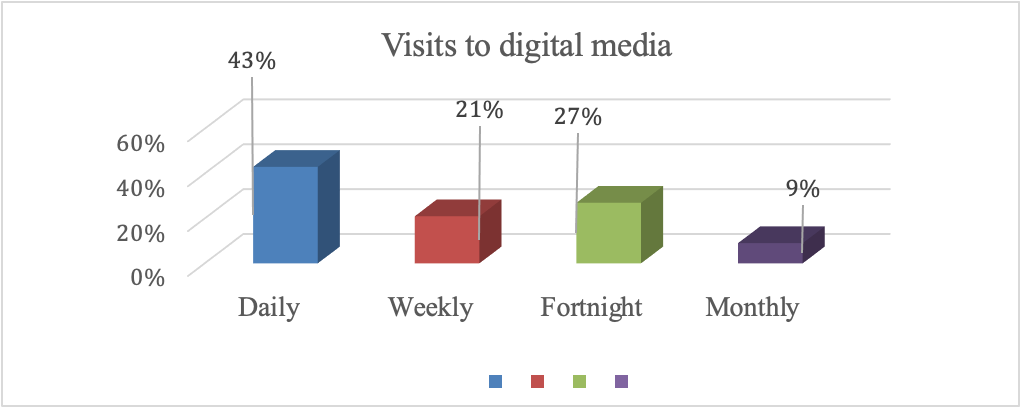
Figure 5. Visits to digital media in the southern region of Ecuador.
The highest number of visits is daily (43%), fortnightly (27%), weekly (21%) and monthly (9%). The
online
mobilization of users or followers is daily, in comparison with the rest of the categories, which
ratifies the interest in the exposed contents. The lower statistics are in line with preferences and
tastes, by virtue of the time available.
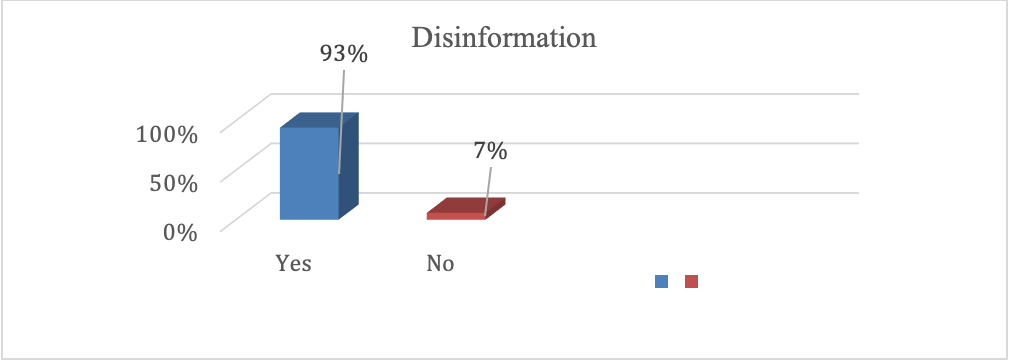
Figure 6. News content misinforms audiences
The consumption of online news information that causes disinformation is high (93%), a smaller number
(7%) considers that it does not. The systematization by categories determines a worrying degree of
disinformation for audiences, with a high load of manipulation in journalistic content, thus shaping
public opinion, despite the prohibition established in constitutional regulations.
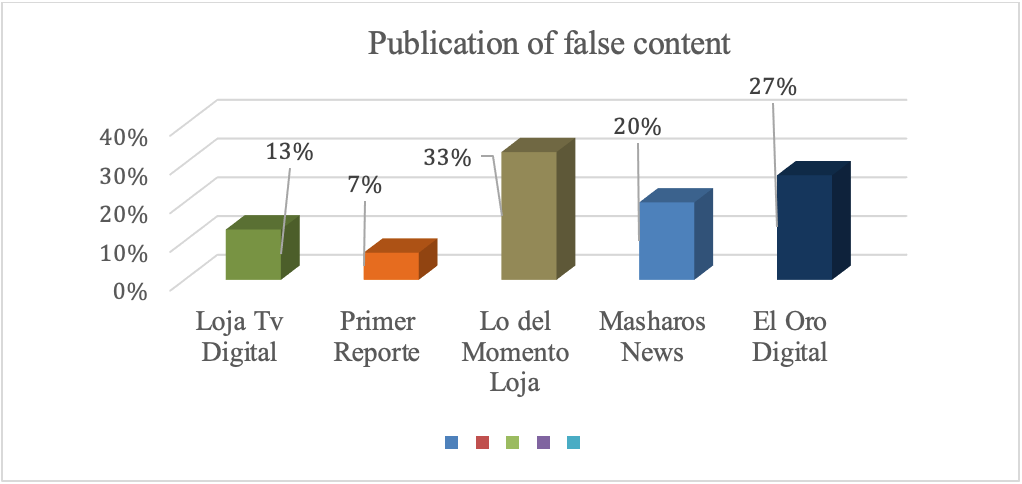
Figure 7. Dissemination of false content in digital media in the southern
region
of
Ecuador.
The false content that digital media such as Lo del Momento Loja has disseminated is 33%, while 13%
say
no, taking into consideration these results, it is argued that the levels of misinformation are
high,
because those who publish content in these media do not investigate, but simply take advantage of
the
moment or the novelty of the event, ie lack of responsibility and seriousness to the audience,
because,
in addition, their ethical procedures are not complemented by the real training of a professional in
digital journalism.
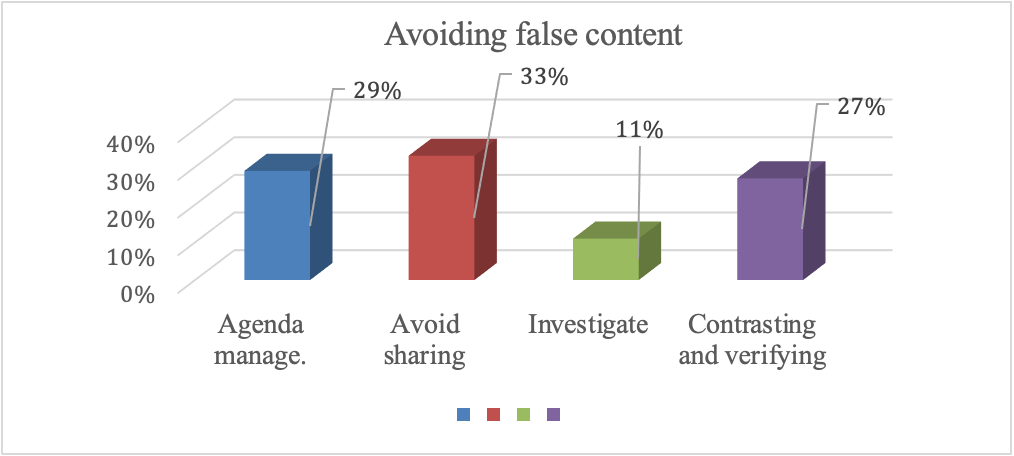
Figure 8. Avoiding false content in digital media in the southern region of
Ecuador.
The analysis corpus projects 29% in keeping an agenda to avoid disseminating false information. 33%
suggest avoiding sharing. 27% suggest contrasting and verifying and 11% investigate. Inquiry,
professionalism, verification, and contrasting are instruments to counteract false news, but this
non-transfer does not result in the adequate management of news fields, since audiences claim the
veracity of the content, its validity and authenticity.
Interviews
The processes of information transmission through different digital communication systems and social
networks, allow transmitting and sharing messages faster than a traditional method. It is not a very
costly and, thanks to the wide range of resources and tools available, digital communication is
within
everyone's reach.
It is of vital importance to manage a media agenda, a daily planning, where the sources to which
journalists resort for their corresponding approach are described. The informative treatment is
designed
by the journalist according to his style and professionalism is a route of perseverance, to avoid
misinformation.
It is complex to identify the most suitable procedures in terms of content contrast, such
responsibility
is assumed by journalists, because the law determines it, in addition to complying with the codes of
ethics by the professional as well as the digital media.
To check the veracity of a text requires expertise and knowledge, otherwise, the vector of false news
will melt. The alternatives are at hand and should be investigated, so that the veracity of the
events
will have a high objective load. The lack of professional training in digital journalism is another
limitation, they do not have enough preparation to assume the correct treatment of the informative
contents.
Discussion and conclusions
The concern expressed by the United Nations, world governments and collegiate bodies in their fight
against fake news is corroborated. The use of social networks should be framed within the value of
truth, contrast, prudence, and reasoning.
The results are deduced from the credibility of digital media, associated with the lack of
journalistic
research that causes high levels of misinformation (93%), according to the criteria of the sample
studied. The exposure of unverified and unverified events or publications, engenders the main cause
for
violating the opinion of the audiences, due to their deficient capacity to differentiate falsehoods
from
realities.
In these times, Ecuador has faced a series of events that have generated community alarm, because
disinformation has been the main food for manipulation and disorientation of citizens. The objective
of
the digital media in the southern zone is to take possession of the so-called scoops, no matter how
accurate the event is. In this investigation process it is confirmed that the contents disseminated
in a
high rate are false, increasing the distrust in both the media and the professionals, being evident
the
lack of responsibility.
The enormous power of influence on the opinion of citizens is determined by the consumption of fake
news
and by the exercise consummated from digital platforms with clear effects on the psycho-social
thinking
of the population, consequently, 76% of the sample assumes to have disseminated false content out of
ignorance. The online spaces through which the greatest amount of dubious content has traveled are
accounted for between 33 and 27%, other variables such as age are incorporated, where 51.02% assume
technological knowledge competences, despite differing in time.
In Ecuador there is a Communication Law that regulates and sanctions the behavior of the media and
journalists; however, at the level of digital resources, there is no norm that sanctions, Facebook,
and
Google have intensified their control plans on fake news, despite this it is difficult to establish
a
100% intervention, so it contravenes the truth.
Responsibility and professional level play a preponderant role for verification and contrasting
(27%),
otherwise false arguments will continue to exist and will live between the technological revolution
and
citizenship. Audiences claim authenticity and informative veracity.
With the arrival of new technological processes and the incorporation of the media to the digital
system,
other forms of communication and journalistic consumption emerge, since the volumes of content
circulating on the platforms are linked to interest, topicality and novelty, these circumstances
force
the audiences to be attentive to the impact of the informative content.
In this same line, the study has allowed to verify that the set of contents disseminated by online
spaces
is not authentic and they create an outbreak due to the low capacity and the limited level of
knowledge
of those who consume them, being this the angle to establish certain differences in relation to fake
news.
The large volumes of daily information disseminated in the online media in the southern part of the
country, cause a huge mobilization of followers, without knowing how objective or fraudulent they
may
be, the purpose is to remain active and browse the digital platforms of interest and post what they
consider relevant, without assuming responsibilities.
Most users do not verify or contrast the information, so they systematically share and disseminate
certain articles according to their perceptions or by simple impulse, this determines the high
levels of
disinformation, a high load of manipulation to shape public opinion, despite the prohibition
established
in the Ecuadorian constitutional regulations.
The digital media established in the southern zone of Ecuador, do not assume the responsibility and
ethical commitment at the time of information immediacy, that opens a gap for the exercise of a new
journalism, quality, based on research and especially incorporate into their production routines
systems
to stop fake news or what is known as fact-checking. A topic that could be addressed in future
research.
References
Chackabarti, S. (23 de junio de 2018). Preguntas difíciles: ¿qué impacto tienen las redes sociales
en
la democracia?Recuperado de https://about.fb.com/ltam/news/h/preguntas-dificiles-que-impacto-tienen-las-redes-sociales-en-la-democracia/
Ayala, A., y Cruz, P. (2017). “Ecuador: la ficción nacional se impone y se expresa en la batalla por
el
rating”. En Una década de ficción televisiva: Análisis de diez años de Obitel (2006-2017),
pp.189-224.
Porto Alegre, Sulina.
Desantes, G. (1976). La información como derecho. Madrid: Editora Nacional.
Gaber, I. (Septiembre de 2017). La información falsa, la opinión de los periodistas. El Correo de
la
UNESCO, Mentiras en las redes sociales. Recuperado de https://es.unesco.org/courier/july-september-2017/informacion-falsa-opinion-periodistas
Rodríguez, G. (26 de abril de 2019). Replanteamientos del nuevo paradigma periodístico, América
Latina
en Movimiento. Recuperado de https://www.alainet.org/es/articulo/199537
Horne, B. (2017). This Just In: Fake News Packs A Lot In Title, Uses Simpler, Repetitive Content in
Text
Body, More Similar To Satire Than Real News. Proceedings of the International AAAI Conference on Web
and
Social Media, 11(1). Recuperado de https://ojs.aaai.org/index.php/ICWSM/article/view/14976
Kopan, T. (12 de agosto de 2016). Donald Trump: I meant that Obama founded ISIS, literally,
cnn.com. Recuperado de https://edition.cnn.com/2016/08/11/politics/donald-trump-hugh-hewitt-obama-founder-isis/index.html
Kovach, B. y Rosentiel, T. (2012). Elementos del periodismo. Todo lo que los periodistas deben
saber
y los ciudadanos esperar. Aguilar.
Markowitz, D. y. (2014). “Linguistic Traces of a Scientific Fraud: The Case of Diederik Stapel”,
Plos
One , 9 (8), pp. 105-937.
Obitel. (2017). Una década de ficción televisiva en Iberoamerica, 10 años de Obitel, (2006-2016).
Brasil.
Recuperado de http://www.obitel.net/wp-content/uploads/2017/09/obitel-2017-port-esp.pdf
Palomo, J. (2018). WhatsApp como herramienta de verificación de fake news. El caso de B de Bulo.
Revista Latina de Comunicación Social, 73, 1384-1397. Recuperado de:
http://www.revistalatinacs.org/073paper/1312/71es.html doi: 10.4185/RLCS-2018-1312
Restrepo, H. (19 de diciembre de 2016). Noticias falsas: fundamentalmente un problema de atencion.
Red
ética. Recuperado de https://fundaciongabo.org/es/etica-periodistica/noticias/noticias-falsas-fundamentalmente-un-problema-de-atencion
Ramírez, S. (2007). El periodismo en la era digital. Los periódicos regionales: el caso de Hoy
es.
Rivera, J. (2012). Mapa de medios digitales del Ecuador 2012. Quito. Ciespal.
Rochlin, N. (2017). “Fake news: Belief in post-truth” Library hi tech, 35 (3), pp. 386,392.
Emerald publishing limited.
Serrano, J. (2012). La desconoxion digital periódica como parte de la alfabetizacion mediática.
III
Congreso Internacional Comunicación 3.0. Navarra.
Silverman, C. (16 de noviembre de 2016). This analysis shows how fake election news stories
outperformed
real news on Facebook. En Buzzfeed.
Tacchini, E. (2017). Some Like it Hoax: Automated Fake News Detection in social Network.
Wang, X. G. (2012). “Automatic crime prediction using events extracted from twitter posts”.
Springer.
Wineburg, S. (21 de junio de 2016). ¿Por qué los estudiantes no pueden buscar la verdad en
google?
Recuperado de http://stearnscenter.gmu.edu/wp-content/uploads/Why-Students-Cant-Google-Their-Way-to-the-Truth-Education-Week.pdf